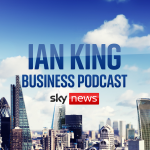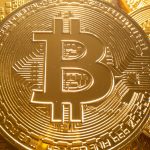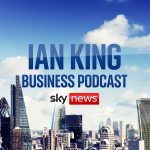Tempting as it is to believe that the chaos with Silicon Valley Bank and its British arm are of interest only to members of the tech community and financial nerds, it has already had a very real bearing on all our lives.
For evidence, look no further than the money markets, where investors bet on the future path of interest rates.
Up until last Friday, they were expecting UK interest rates to peak at around 4.75% – possibly even a little bit higher.
But the shock of the bank collapse caused a sudden reappraisal. By Monday evening, they were pricing in a peak of only 4.25% – a very big fall by the scheme of these things. It was a similar story in the US, where the expected peak for rates dropped by around half a percentage point.
Why are these two stories – interest rates and an obscure bank collapse – colliding?
In large part it’s because they were always intertwined – not that anyone paid much attention before last week.
Part of the reason Silicon Valley Bank (SVB) suffered its demise was because over the past 18 months rising interest rates had caused a sharp fall in the value of bonds held by the bank.
Andrew Bailey says ‘nothing is decided’ suggesting interest rates may rise less than thought
Britcoin: Future of a digital pound ‘more likely than not’, Bank of England official says
Inflation-busting public sector pay rises risk stoking inflation, Bank of England governor warns
It was, in large part, those losses and the impact on SVB’s balance sheet that prompted depositors to run from the bank late last week (which in turn triggered the UK branch’s collapse).
In other words, one of the consequences of SVB’s implosion is that the Federal Reserve and Bank of England might become a little more wary of raising interest rates in future.
Please use Chrome browser for a more accessible video player
Read more:
Tech bosses show relief over Silicon Valley Bank rescue
Social media-driven run on Silicon Valley Bank has repercussions on many fronts
The codenames and secret talks which averted a banking disaster
Everyone knew there were unexploded bombs in the financial system which would begin to explode when money got more expensive; the fear now is that there may be more explosions to come.
This isn’t the only explanation for why rate expectations have come down. There’s also the fact that the chaos at SVB, Signature bank (which also failed) and across much of the US banking system might dampen economic growth or even precipitate a recession.
And, for the most part, central banks tend to cut rates rather than raise them in the face of a recession. And we were already getting close to the potential peak in borrowing costs.
Even so, this interplay between an extremely nervous financial system and interest rates is a big part of the story.
Which brings us to some of the consequences.
‘Things could get pretty gritty’
Let’s assume the Fed and the Bank of England are indeed going to allow interest rates to peak at a lower rate than previously expected.
Does that mean that we have to expect higher inflation in future? What if inflation turns out to be considerably more sticky than most central banks expect (they mostly think it’ll come down pretty quickly)?
Please use Chrome browser for a more accessible video player
The short answer is that things could get pretty gritty: the Bank of England is duty bound to try to keep inflation low and to try to keep the financial system stable, but among the many things illustrated by the SVB episode is that those two objectives can sometimes clash with each other.
In this case, higher interest rates (to fight inflation) contributed to financial instability. Yes, there was lots else going on besides – there’s a strong case to say the Fed wasn’t doing enough to monitor the risk posed by unusual banks like SVB – but the rising cost of money is a big part of the story.
There’s good news and bad news
If inflation does stay a lot higher than the central banks expect, then we could be in for a more turbulent time.
And how worried should we be about that? The next few months will tell, but for the time being there’s good and bad news.
Be the first to get Breaking News
Install the Sky News app for free
The good is that the headline consumer price index in both the UK and US seems to have been faring more or less as the central banks expected – gradually coming down. Earlier today, the US CPI came in at an annual rate of 6% – bang in line with expectations.
The bad news is that when you look beneath the surface, there are some hints that inflation could prove more stubborn than expected.
Click to subscribe to The Ian King Business Podcast wherever you get your podcasts
In particular, core inflation – the behaviour of prices once you strip out volatile items like energy and food – is still building, especially when you ignore housing costs. That suggests there’s still upwards pressure on prices.
And sure enough, immediately after the release of those numbers, interest rate expectations rose a little, both in the UK and US.
Now, UK rates are expected to peak not at 4.25% but 4.4% (which in practical terms means a fair few people – though not everyone – expect 4.5% rates).
In short, we’re in for a bumpy few months.





















